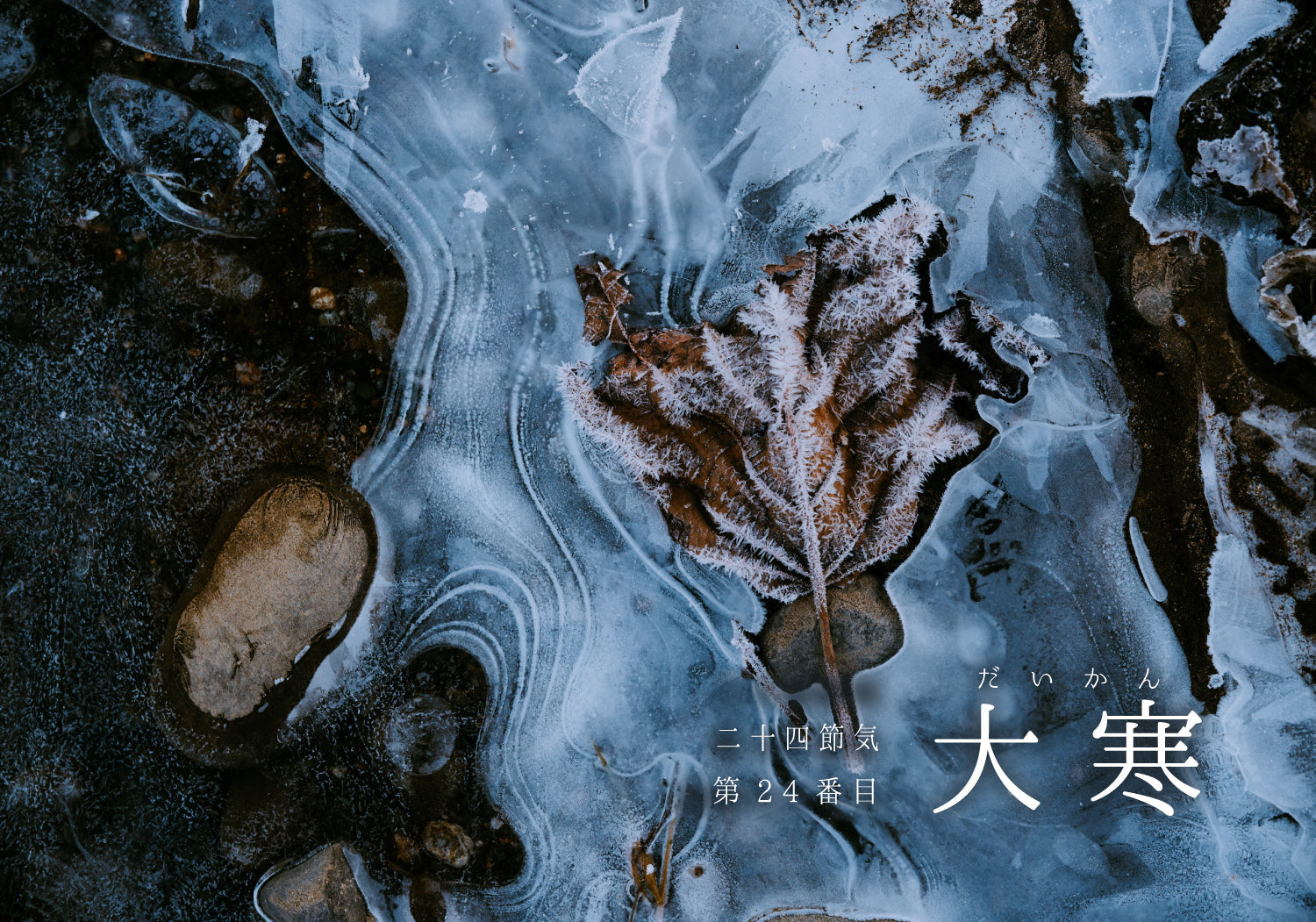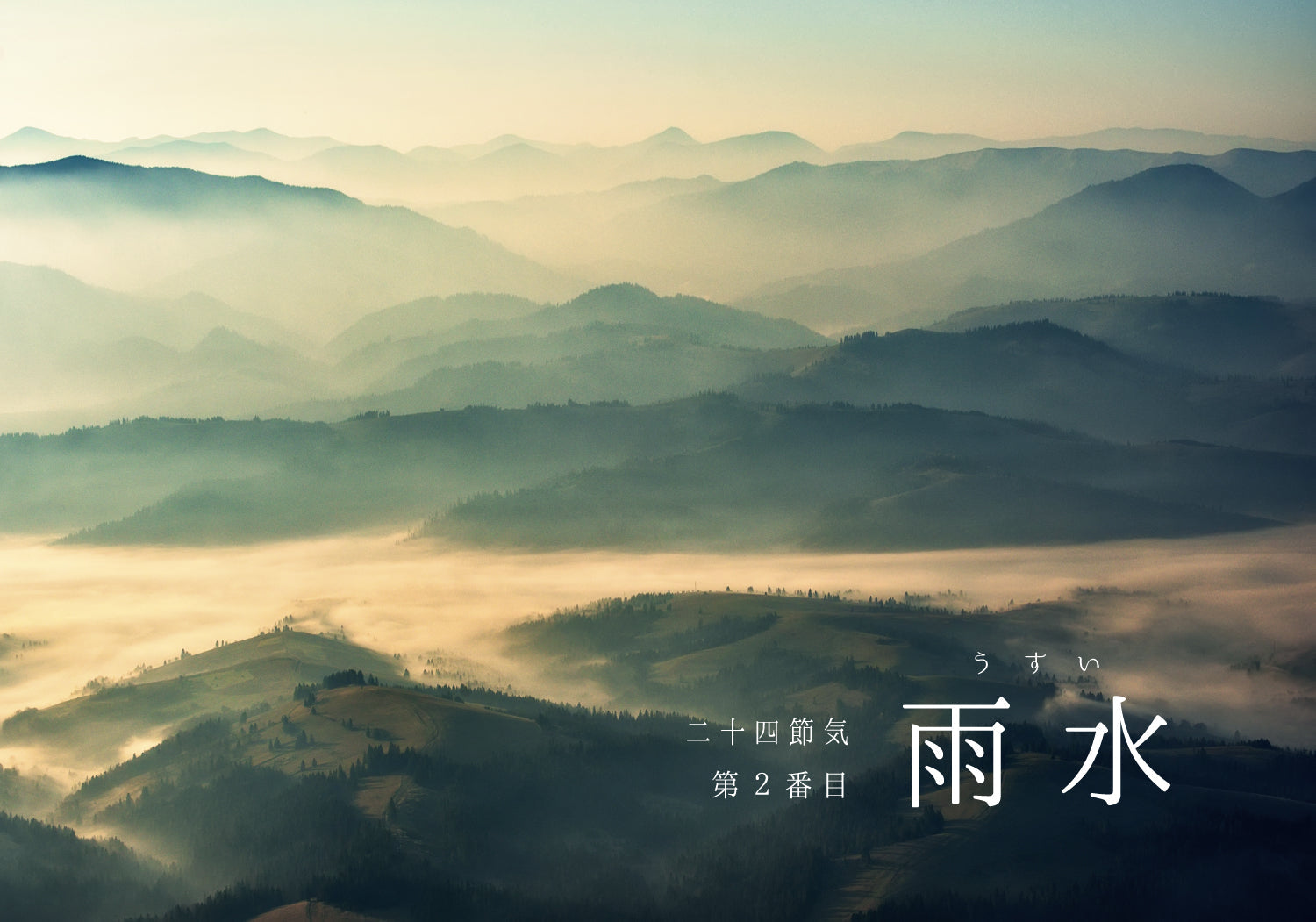24 solar terms No. 15 [ Hakuro ]
A cool breeze blows in the mornings and evenings, and the pleasant sounds of insects can be heard.
The heat subsides and the grains begin to ripen.
"Hakuro" refers to the time when dew falls and appears to sparkle white.
When the temperature drops sharply at night, the water vapor in the air cools, turns into droplets, and forms on leaves and flowers. This is dew (morning dew).
Although the heat is still lingering during the day, the mornings and evenings are getting cooler, signaling the start of morning dew falling.
As the seasons change little by little, there are more opportunities to discover "little autumn."
Now, we will introduce some of the events and culture that take place during the Hakuro season.
1. Double Ninth Festival ... September 9th

A day to pray for good health through the medicinal properties of chrysanthemums.
It is considered one of the five seasonal festivals, along with the Doll's Festival in March and the Boy's Festival in May.
The Double Ninth Festival is also known as the Chrysanthemum Festival, and as such, people admire the beautiful chrysanthemum flowers that bloom in autumn while warding off evil spirits and praying for good health.
It is customary to drink "chrysanthemum wine" and eat "chestnut rice."
Kikuzake is a type of sake made by steeping chrysanthemum flowers in it to infuse them with its aroma. People drink this sake and eat rice made with chestnuts, which are in season in the fall, to pray for good health.
Also, decorations for the Double Ninth Festival include Hina dolls.
Some people may be surprised to hear "Hina dolls?" even though it is not the Doll's Festival, but this custom is called "Nochi no Hina" and is an event that has been passed down since the Edo period, in which the dolls are displayed again with the hope of longevity.
Since Hina dolls are expensive, they are put away in March and then put outside about six months later in September (around the time of Choyo no Sekku) to air them out and prevent them from getting damaged. Hina dolls are displayed for about a month after Choyo no Sekku.
In recent years, in the midst of what is said to be an "era of 100-year life spans," the keyword "healthy lifespan" has drawn attention to "Ato no Hina," which involves purchasing Hina dolls for oneself as one ages, with the hope of living a long and healthy life, along with the Double Ninth Festival.

2. The Mid-Autumn Moon: The Fifteenth Night
During the Hakuro period, there is the 15th night of the harvest moon.
The fifteenth night of the full moon is also known as the moon viewing, the full moon, or the harvest moon, and has been considered a good time for moon viewing since ancient times, when people would hold drinking parties under the moon, compose poetry, decorate with silver grass, serve moon-viewing rice dumplings, taro, edamame, chestnuts, and prepare sacred sake, and enjoy gazing at the moon.
In the past, people would know the approximate dates of the month and year by checking the phases of the moon, and so they would carry out their farming work. For this reason, the full moon on the fifteenth night of the month was an important turning point when festivals were held.

The custom of viewing the Mid-Autumn Moon is said to have originated in China during the Tang Dynasty, and was introduced to Japan by aristocrats during the Heian period, gradually spreading to samurai and townspeople.
During that time, it was said that this was the time of year when the moon was most beautiful, so aristocrats of the Heian period would hold moon-viewing parties to gaze at the harvest moon and compose waka poetry.
Among farmers, it is associated with agricultural events and has the meaning of a harvest thanksgiving festival, and the Mid-Autumn Moon is also known as the "Potato Moon," which originated from a harvest ritual for potatoes such as taro. It has long been handed down as one of the annual events.
As autumn is known as the "season of harvest," the harvest season for many foods begins after the harvest moon. Let's enjoy moon viewing while giving thanks for the blessings of the earth and the abundance of nature.
3. The beginning of the equinox
▼For more information about Ohigan, please see below▼
Autumnal Equinox Day (Shubun no Hi) is considered a national holiday to "honor ancestors and remember those who have passed away."
Originally, Higan was a major Imperial Court event, and the Vernal Equinox Day was celebrated as the "Spring Imperial Ancestors' Festival," and the Autumnal Equinox Day was celebrated as the "Autumn Imperial Ancestors' Festival." Even after the law was amended to change the names to "Spring Equinox Day" and "Autumn Equinox Day," the customs were passed down as "Ohigan," and the two days were designated national holidays.
The time of White Dew is expressed as follows in the 72 seasonal divisions:
First Season, 43rd Season "Grass dew white"
This is the time when the morning dew on the flowers looks white and cool. This is the transition from summer to autumn. The morning dew on the wild grass is now shining white. This is often seen on days when the temperature drops in the mornings and evenings, and is also a seasonal word for autumn.

Next Season 44th Season <Sekirei ku (the wagtail's cry)>
It's the time of year when the chirping of wagtails can be heard, announcing the arrival of autumn.

Last Season 45th Season <Swallow and Monkey>
This is the time when the swallows that came to Japan in early spring head back to warmer southern regions. They will return again next year, so this is a brief farewell.







